| UFC Weight Class | Minimum Weight | Maximum Weight | Current Champion |
|---|---|---|---|
| Heavyweight | 205 lb (93 kg) | 265 lb (120 kg) | Tom Aspinall |
| Light Heavyweight | 185 lb (83.9 kg) | 205 lb (93 kg) | Alex Pereira |
| Middleweight | 170 lb (77.1 kg) | 185 lb (83.9 kg) | Khamzat Chimaev |
| Welterweight | 155 lb (70.3 kg) | 170 lb (77.1 kg) | Islam Makhachev |
| Lightweight | 145 lb (65.8 kg) | 155 lb (70.3 kg) | Ilia Topuria |
| Featherweight | 135 lb (61.2 kg) | 145 lb (65.8 kg) | Alexander Volkanovski |
| Bantamweight | 125 lb (56.7 kg) | 135 lb (61.2 kg) | Merab Dvalishvili |
| Flyweight | 115 lb (52.2 kg) | 125 lb (56.7kg) | Alexandre Pantoja |
| UFC Weight Class | Minimum Weight | Maximum Weight | Current Champion |
|---|---|---|---|
| Featherweight | 135 lb (61.2 kg) | 145 lb (65.8 kg) | Vacant |
| Bantamweight | 125 lb (56.7 kg) | 135 lb (61.2 kg) | Kayla Harrison |
| Flyweight | 115 lb (52.2 kg) | 125 lb (56.7kg) | Valentina Shevchenko |
| Strawweight* | No requirement | 115 lb (52.2kg) | Mackenzie Dern |
* The women’s UFC division is split into only four classes: strawweight, flyweight, bantamweight, and featherweight. The strawweight class is only used in the women’s division; men do not compete in it.
Discover the best sites for betting on UFC matches:
Just like boxing, UFC is divided into different weight classes. Understanding these weight classes and which fighters compete in them is essential before you begin to bet on UFC.
Weight classes exist to level the playing field between fighters, and for the fighters’ safety. Fighting within a weight class means that a fair fight (in physical terms at least) is guaranteed, and the winner will be determined by the skill of the fighter as opposed any significant physical size advantage.
This page has EVERYTHING you need to know about weight classes in UFC, and why they matter for betting.
In this ultimate guide to UFC weight classes, you’ll find:
The maximum and minimum allowed weight for each UFC weight class.
The history of the weight class, notable fighters from the past and present, and the current champion.
Specific tips for betting on each UFC weight class.
Keeping an eye on weight classes is essential to maximize your betting profits. If a fighter moves up to an unfamiliar class to fight his next opponent, you should be aware of it. You should know what styles of fighting are most common in each class and the most common reasons for stoppages.
Each weight class has its own distinct qualities and the better you understand them, the more likely you are to win your bets.
Keep reading for in-depth info on every UFC weight class from heaviest to lightest. Check out our UFC Rankings Men's and Women’s Pound-for-Pound.
Or look into some of our tips on how to bet on the UFC.
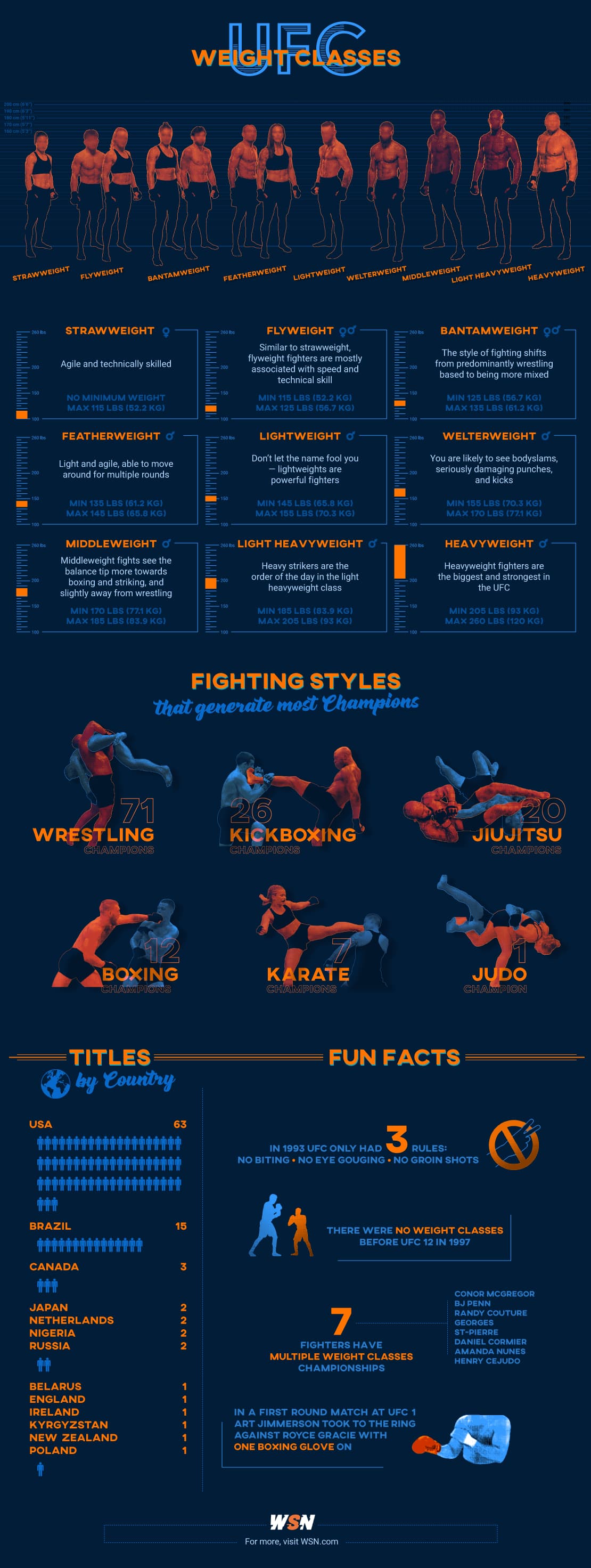
Welcome to the top of the line. Fighters in the UFC’s heavyweight division are the biggest and strongest in the sport.
Among other things, these seriously heavy athletes are less durable than the wiry lower-weight athletes over time, which is partly why we have seen the heavyweight title change hands so many times.
Here are the main things to know about the heavyweight class:
The minimum weight is 205lb
The maximum weight is 265lb
The current champion is Tom Aspinall

The heavyweight class in mixed martial arts (MMA) has a rich history, featuring some of the sport's most iconic and powerful fighters. The division, typically reserved for athletes weighing over 205 pounds (93 kg), has seen its share of legendary champions, including Fedor Emelianenko, Brock Lesnar, Cain Velasquez, and Stipe Miocic.
Notably, Miocic holds the record for most UFC heavyweight title defenses, with 3 successful defenses. Over the years, the division has evolved from a focus on sheer power to a more well-rounded style, with champions exhibiting speed, technique, and endurance alongside strength.
The division also boasts some of the hardest-hitting fighters in MMA, with Francis Ngannou famously recording the hardest punch ever measured at 129,161 units on the PowerKube machine.
As the UFC's premier weight class, the heavyweight division continues to captivate fans with thrilling bouts and dramatic title fights, making it a cornerstone of the sport’s history.
| Name | Country | Height | Weight | Stance | Reach |
|---|---|---|---|---|---|
| Cyril Gane | France | 6'3” | 245lb | Orthodox | 81” |
| Alexander Volkov | Russia | 6'6” | 253lb | Orthodox | 81” |
| Sergei Pavlovich | Russia | 6'3” | 246lb | Southpaw | 80” |
| Curtis Blaydes | USA | 6'3” | 256lb | Orthodox | 84” |
| Jalton Almedia | Brazil | 6'3” | 235lb | Orthodox | 79” |
Heavyweight fighters are the biggest and strongest in the UFC. Unsurprisingly, heavy striking is the biggest weapon for most fighters in the class.
Early stoppages are common, and fights which do last a long time tend to see fighters gas out quickly as the fight goes deeper.
Betting on early stoppages and KO/TKOs in the UFC’s heavyweight division is often an effective strategy.
The fighters’ sheer weight, combined with the power they’re throwing around, means injuries are common.
When a heavyweight fighter does get injured, it can be harder for them to regain peak fitness compared with the more resilient and wiry lighter athletes. This means that fighters’ injury record and recent fitness should be a major consideration for betting.
Just look at the history of the heavyweight title – of the sixteen different champions, only one man has managed to defend the belt three times consecutively.
Parlays with enhanced odds
Impressive range of bets
Promo Code "WSNSPORTS"
Get Up to $1,500 in Bonus Bets
21+ New Customers Only. Subject to eligibility requirements. Bonus bets are non-withdrawable. Offer not available in DC, MS, NY, NV, ON, or PR. Gambling problem? Call 1-800-GAMBLER
Free play options
Special contests for newbies
Bet $5, Get $150 in Bonus Bets if Your Bet Wins
21+ | T&Cs apply.
The second heaviest weight class in UFC, light heavyweight fighters often move up and down from the heavyweight class to compete in both.
Another thing we love is that there’s a 20-pound difference between the max and min weights in the light heavyweight class, meaning there is still room for lots of varying styles of fighting.
Here are the main things to know about the light heavyweight UFC division:
The minimum weight is 185lb
The maximum weight is 205lb
The current champion position is Alex Pereira
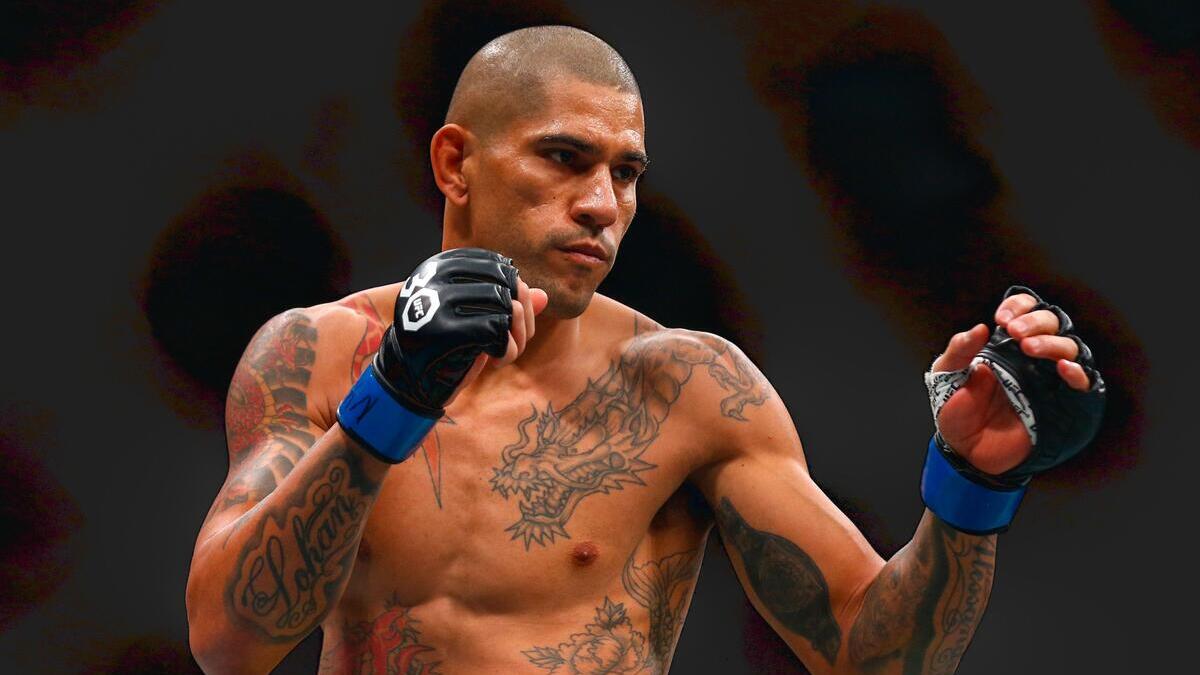
The light heavyweight division in MMA has been home to some of the sport's most iconic champions, with fighters typically up to 205 pounds.
Early history was defined by pioneers like Frank Shamrock, who became the first champion in 1997, followed by the reigns of Tito Ortiz and Randy Couture.
The division saw dominant champions like Chuck Liddell and Jon Jones, who became one of the most successful and controversial champions of all time, with a record of eight title defenses. After Jones, the belt changed hands several times, with champions such as Daniel Cormier, Jan Błachowicz, Glover Teixeira, and Jiri Procházka further elevating the division.
Known for its blend of power, agility, and striking, the light heavyweight class continues to feature exciting, dynamic matchups that keep fans engaged.
| Name | Country | Height | Weight | Stance | Reach |
|---|---|---|---|---|---|
| Jiří Procházka | Czech Republic | 6’2” | 203lb | Switch | 80” |
| Magomed Ankalaev | Russia | 6’3” | 205lb | Southpaw | 75” |
| Carlos Ulberg | New Zealand | 6’3” | 203lb | Orthodox | 77” |
| Khalil Rountree Jr. | United States | 6’0” | 205lb | Southpaw | 76” |
| Jan Blachowicz | Poland | 6’2” | 203lb | Orthodox | 78” |
Heavy strikers are the order of the day in the light heavyweight class. However, when we analyze the most dominant athlete in the history of the class, Jon Jones, it is clear that a varied skill set is still necessary to thrive in the division.
Jones has devastating power but is also an extremely awkward fighter and capable of winning fights both via submission and points.
There is also, perhaps surprisingly, room for different body shapes in the division. For example, Cormier is 5” shorter in height and has a 12” lower reach than Jones. Nevertheless, the fights between the two were by no means walk-overs, as Cormier found ways to affect Jones, even if he could not emerge victorious.
The power of athletes in this division means that KO finishes are always a distinct possibility.
Jones’ performances in this division, in contrast to the heavyweight class, show that true dominance is possible when a truly exceptional fighter has the better of the field.
While bad for competitiveness, there are still prop bets available to make money from dominant athletes. For example, many sportsbooks will allow you to bet on the number of successful title defenses over time or how a specific fight will be decided.
Parlays with enhanced odds
Impressive range of bets
Promo Code "WSNSPORTS"
Get Up to $1,500 in Bonus Bets
21+ New Customers Only. Subject to eligibility requirements. Bonus bets are non-withdrawable. Offer not available in DC, MS, NY, NV, ON, or PR. Gambling problem? Call 1-800-GAMBLER
Free play options
Special contests for newbies
Bet $5, Get $150 in Bonus Bets if Your Bet Wins
21+ | T&Cs apply.
Now we’re getting into some of the really heavy hitters of the UFC.
The middleweight division is home to Anderson Silva, holder of the longest run as a champion in any class and widely regarded as one of the best strikers of all time.
Although heavy striking is common, wrestling skills remain extremely important in the middleweight class.
Here are the main things to know about it:
The minimum weight is 170lb
The maximum weight is 185lb
The current champion is Khamzat Chimaev
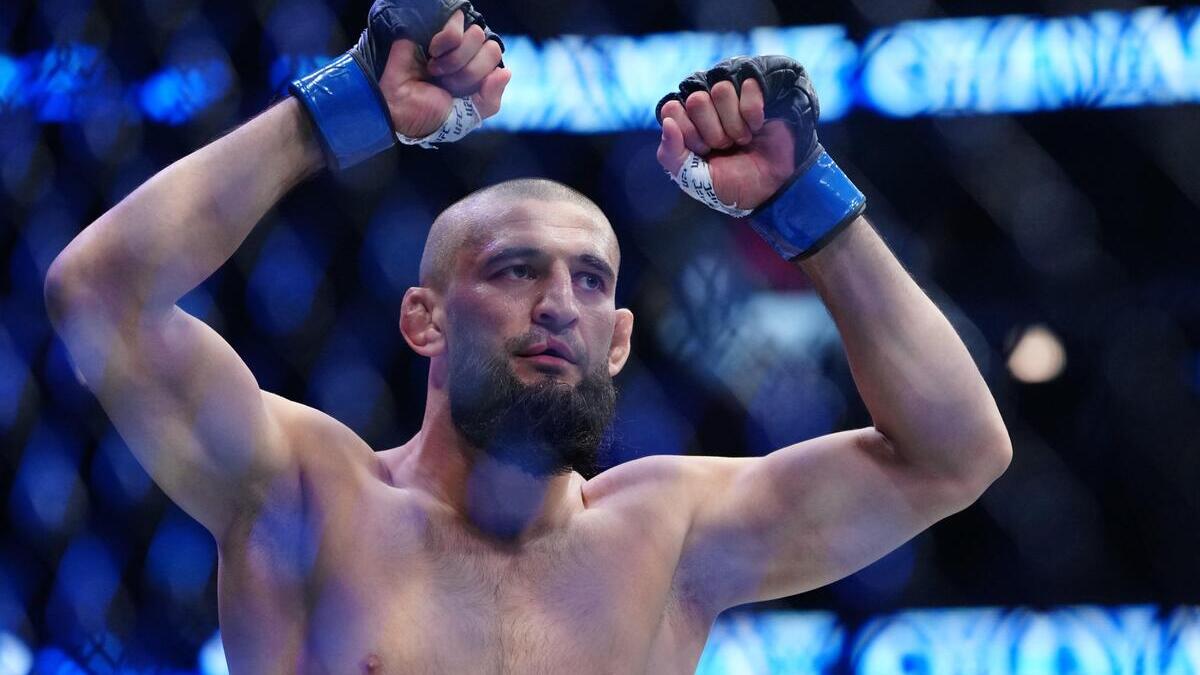
The UFC middleweight division has a rich history filled with dominant champions and legendary rivalries.
Rich Franklin became the first UFC middleweight champion in 2005, holding the title until he was dethroned by Anderson Silva in 2006. Silva went on to become one of the most dominant champions in UFC history, holding the title for 2,457 days, the longest reign in UFC history, until his loss to Chris Weidman in 2013.
Weidman’s victory over Silva marked the end of an era, and he defended the title twice before being defeated by Luke Rockhold in 2015. Rockhold’s reign was short-lived, as he lost to Michael Bisping in one of the biggest upsets in UFC history at UFC 199, with Bisping claiming the title at the age of 37.
Bisping defended his title once before losing it to Robert Whittaker in 2017.
Whittaker went on to become a dominant champion, successfully defending the belt until he was defeated by Israel Adesanya in 2019.
Adesanya, known for his unorthodox striking and defensive skills, went on to defend his title multiple times and solidify his place as one of the best middleweights in history.
Adesanya's reign includes a notable victory over Paulo Costa at UFC 253, where he dominated the fight to retain the title.
The middleweight division continues to evolve, with new contenders constantly emerging all the time. The mix of striking, grappling, and speed makes the middleweight class one of the most competitive and exciting in MMA.
| Name | Country | Height | Weight | Stance | Reach |
|---|---|---|---|---|---|
| Dricus Du Plessis | South Africa | 6’0” | 185lb | Orthodox | 76'' |
| Nassourdine Imavov | Russia | 6’3” | 185lb | Ortodox | 75” |
| Sean Strickland | United States | 6’1” | 182lb | Orthodox | 76” |
| Anthony Hernandez | USA | 6’0” | 185lb | Orthodox | 75” |
| Brendan Allen | USA | 6’2” | 185lb | Orthodox | 75” |
Middleweight fights see the balance tip more towards boxing and striking, and slightly away from wrestling. Wrestling is still important, however, and many fighters have found success in the division by focusing on technical ground skills.
However, heavy strikers like Anderson Silva tend to dominate the division.
The power of the fighters tends to make for some particularly brutal fights, with early stoppages always a distinct possibility.
When the middleweight division pairs two fighters who rely on striking as their main method of attack, you can anticipate a fight to end early.
Again, watch out for fighters who have moved up or down in weight divisions.
Fighters moving up to middleweight are likely to try to win via submission or wrestling, as they may not have the power to knock out the naturally heavier man. On the flip side, those moving down from light heavyweight will hope to overpower naturally smaller opponents with their superior striking.
The end of Anderson Silva’s reign shows that we should be aware of warning signs of a fighter becoming complacent through repeated victories. Although he went into his fight against Weidman as a big favorite, Silva had been rattled in recent matches and was becoming reckless with his showboating.
Anyone who looked beyond the headline of ten consecutive title defenses may well have predicted the outcome.
Welterweight fighters are more powerful but still mobile enough to be very effective wrestlers. It’s been a popular division in the UFC because it’s been home to one of the longest title-defense streaks in the league’s history.
Here are the main things to know about Welterweights:
The minimum weight is 155lb
The maximum weight is 170lb
The current champion is Islam Makhachev
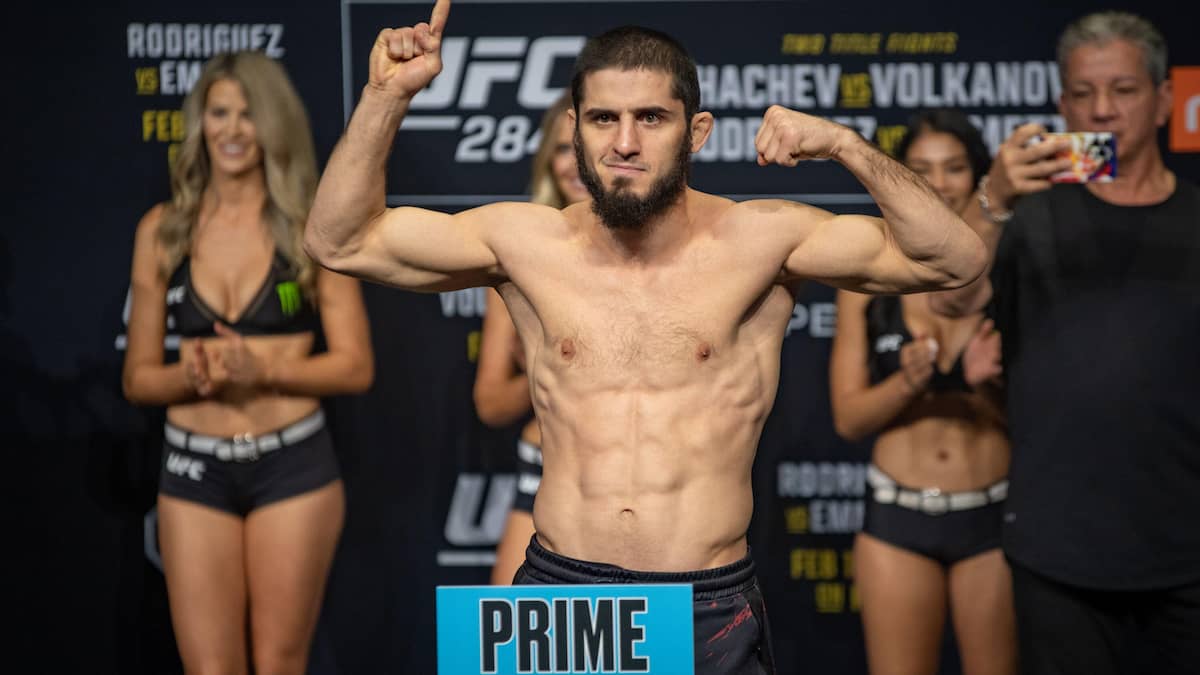
The UFC welterweight division has been one of the most competitive and storied divisions in MMA. The division’s history began with Pat Miletich, who became the first UFC welterweight champion in 1998. Miletich’s reign marked the start of the division’s growth, but it was Matt Hughes who became the face of the division in the early 2000s. Hughes dominated the welterweight class, defending his title 7 times and becoming one of the most decorated champions in UFC history.
Following Hughes’ reign, Georges St-Pierre (GSP) emerged as the next dominant force. GSP won the title in 2004 and went on to defend it successfully 9 times, solidifying his place as one of the greatest mixed martial artists of all time. He was known for his well-rounded skill set, including his striking, wrestling, and superior fight IQ. GSP's reign lasted until his temporary retirement in 2013, during which time the welterweight division saw new challengers rise.
In 2015, Tyron Woodley claimed the title with a stunning first-round knockout of Robbie Lawler. Woodley went on to defend the title 4 times, establishing himself as one of the division's most physically imposing champions. However, Kamaru Usman took the division by storm after defeating Woodley in 2019, and Usman went on to defend the title 5 times, including dominant victories over top contenders like Colby Covington and Jorge Masvidal.
Usman’s reign ended in 2022 when he was defeated by Leon Edwards in a dramatic fifth-round knockout at UFC 278. Edwards became the first British fighter to win the UFC welterweight title, marking a major milestone in the division’s history.
| Name | Country | Height | Weight | Stance | Reach |
|---|---|---|---|---|---|
| Jack Della Maddalena | Australia | 5’11” | 170lb | Switch | 73” |
| Belal Muhammad | United States | 5’9” | 170lb | Orthodox | 72” |
| Michael Morales | Ecuador | 6'0” | 170lb | Orthodox | 79” |
| Shavkat Rakhmonov | Uzbekistan | 6'1” | 170lb | Ortodox | 77” |
| Carlos Prates | Brazil | 6'1” | 170lb | Southpaw | 78” |
At the welterweight class we start to see the true power of the fighters come to the fore. Watching a welterweight fight, you are equally as likely to see bodyslams and seriously damaging punches and kicks as proficient wrestling.
The division has also historically been one of the deepest, with many of the most talented fighters in UFC history fighting in it – making the dominance of Georges St-Pierre even more impressive.
The welterweight division offers a wide diversity of fighting styles so there are lots of interesting matchups to bet on.
Since the size and body shape allows for so many different styles, it is important to consider how each fighters’ strengths and weaknesses match up, perhaps more than in any other division.
St-Pierre’s dominance was based largely on his submission moves and speed, but many fighters in welterweight rely on sheer punching power to secure their wins.
By studying the fighters, you can often predict a lot about how the fight will pan out.
Another lesson from the history of the welterweight division is in the importance of Injuries and other pre-fight issues. It may sound obvious, but if a fighter has been struggling in the build-up, it can play a crucial role in how fights play out.
For example, after St-Pierre won the title for the first time, he immediately lost it in a shock fight against Matt Serra, who was a huge underdog with the sportsbooks. In retrospect, many have blamed the loss on St-Pierre’s personal struggles, including the death of family members, change of management, and motivation issues.
Things like this should always be taken into account when betting.
Start betting on UFC at one of the sportsbooks below:
Parlays with enhanced odds
Impressive range of bets
Promo Code "WSNSPORTS"
Get Up to $1,500 in Bonus Bets
21+ New Customers Only. Subject to eligibility requirements. Bonus bets are non-withdrawable. Offer not available in DC, MS, NY, NV, ON, or PR. Gambling problem? Call 1-800-GAMBLER
Free play options
Special contests for newbies
Bet $5, Get $150 in Bonus Bets if Your Bet Wins
21+ | T&Cs apply.
While Conor McGregor seemed invincible in the featherweight division, he definitely struggled when moving up to lightweight and beyond.
Lightweight fighters are still light enough to display genuine speed but have enough power and weight to throw devastating blows. You can throw in the durability to withstand some very heavy hits too.
Lightweight is also the first UFC class without female competitors.
Here are the main things to know about lightweights:
The minimum weight is 145lb
The maximum weight is 155lb
The current champion is Ilia Topuria
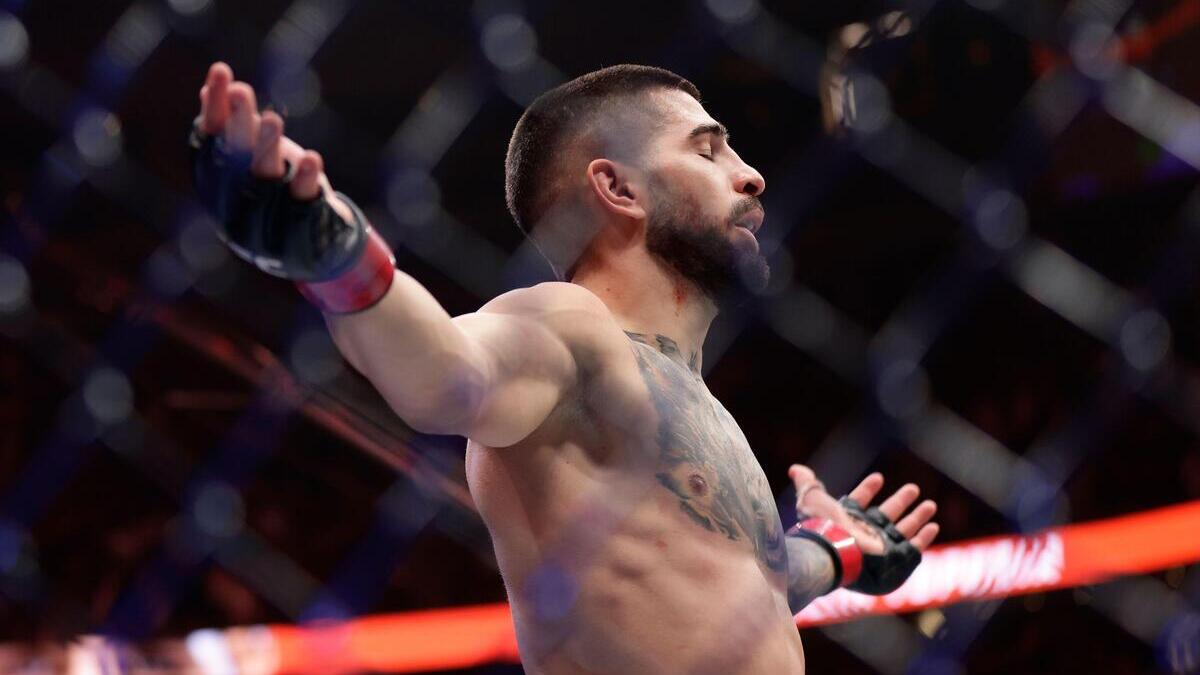
The UFC lightweight division has produced some of the most dynamic and exciting fighters in MMA history. The division was established in 2001, with BJ Penn becoming the first lightweight champion in UFC history. Penn’s reign set the stage for a highly competitive division, as he was known for his well-rounded skills and ability to dominate opponents on the ground and stand-up.
Following Penn’s reign, Rafael dos Anjos emerged as a dominant force, capturing the title in 2015 by defeating Anthony Pettis. Dos Anjos defended the belt once before losing it to Eddie Alvarez in 2016, who became the first fighter to hold titles in both the lightweight and featherweight divisions in major organizations.
However, it was Khabib Nurmagomedov who would become the most dominant lightweight champion in UFC history.
Khabib, undefeated in his career, captured the lightweight title in 2018 by defeating Al Iaquinta and went on to defend the title three times. His dominant wrestling, control, and ground-and-pound game made him nearly unstoppable in the division. Khabib retired in 2020 with an undefeated record of 29-0, leaving behind a legacy as one of the greatest lightweights in UFC history.
After Khabib’s retirement, the division saw a rise in new stars, with Charles Oliveira claiming the vacant lightweight title in 2021 by defeating Michael Chandler. Oliveira's victory marked the beginning of a dominant run, as he broke the record for most submission victories in UFC history.
In 2022, Islam Makhachev, a close training partner of Khabib, took the title from Oliveira, showcasing his dominant wrestling and striking skills, while solidifying his position as one of the top lightweights in the world.
The UFC lightweight division remains one of the most competitive and high-action classes, known for its fast-paced, technical fights and the presence of many top fighters continually vying for the championship.
| Name | Country | Height | Weight | Stance | Reach |
|---|---|---|---|---|---|
| Arman Tsarukyan | Armenia | 5’6” | 154lb | Orthodox | 73” |
| Charles Oliveira | Brazil | 5’10” | 154lbs | Orthodox | 74” |
| Max Holloway | United States | 5’11” | 155lbs | Orthodox | 69” |
| Justin Gaethje | United States | 5’11” | 154lbs | Orthodox | 70” |
| Paddy Pimblett | England | 5’10” | 155lbs | Orthodox | 73” |
Don’t let the name fool you – lightweights are powerful fighters. The defending champion, Khabib Nurmagomedov, is a highly technical fighter, combining Soviet sambo with judo and other wrestling techniques to wear down opponents.
In contrast, some of the other top contenders in the division, like McGregor and Poirier, prefer to focus on landing heavy shots and scoring victories via KO/TKO.
The body shapes of lightweight fighters allow for this range of fighting options, with power and technique roughly of equal importance.
The lightweight division offers lots of betting opportunities because it’s common to see fighters with wildly varying styles and specialties. That just isn’t the case in the highest and lowest-weight divisions.
In the case of Nurmagomedov, who is unbeaten in the UFC, the longer his fights go on, the more likely he is to emerge victorious, due to his awkward and technically superior wrestling. On the other side, if he were to lose a match, it would likely be due to taking an early punch by a hard hitter, rather than being outwrestled.
Another good lesson we can see from the history of the lightweight division is to pay close attention to athletes moving weight categories. Conor McGregor dominated the flyweight class due in large part to the power of his punches, especially his left hand.
In the fights he has subsequently lost, against Diaz at 170lb and Khabib at 155lb, he has arguably been able to land the same punches a couple of times – they just don’t do quite the same damage they did in the featherweight division.
In the case of McGregor’s first loss against Diaz, he was a huge favorite with sportsbooks due as much to his popularity and reputation as anything else, even though he was moving up two whole weight classes. There was a lot of value to find for anyone betting against the public on that occasion.
Featherweight has been a popular category in the UFC. It is the original home of probably the biggest international superstar UFC ever produced, Conor McGregor.
The featherweight division has seen some of the most iconic moments in the history of the sport.
Here are the main things to know about the featherweight class:
The minimum weight is 135lb
The maximum weight is 145lb
The current men’s champion is Alexander Volkanovski
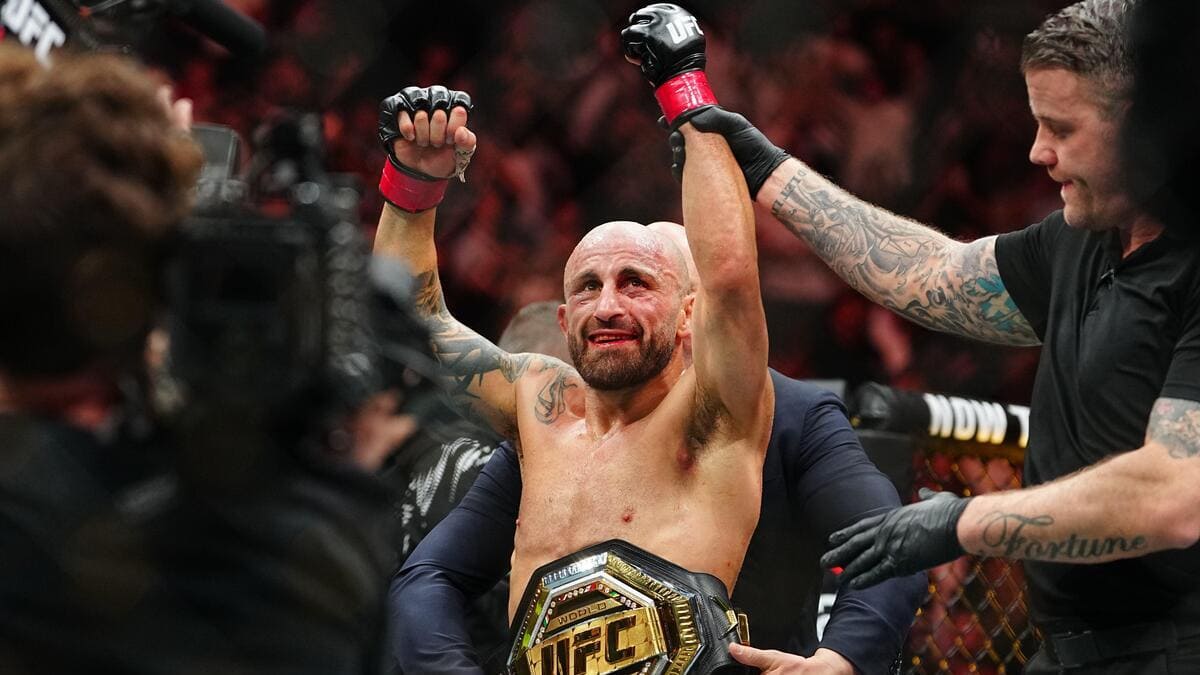
Established in 2001, the division initially struggled to gain the same recognition as heavier classes, but it gained prominence with the rise of Jose Aldo, who became the first UFC featherweight champion after the UFC merged with the WEC in 2010.
Aldo was an exceptional fighter with unmatched striking and a relentless pace, holding the title for 2,198 days, the longest reign in UFC featherweight history. He successfully defended the belt 7 times, defeating top contenders such as Chad Mendes and Frankie Edgar.
In 2015, Conor McGregor stunned the MMA world by defeating Aldo in just 13 seconds at UFC 194 to win the featherweight title, marking one of the fastest knockouts in a UFC title fight. McGregor’s win made him the first fighter in UFC history to hold two titles simultaneously, as he also held the lightweight belt. However, McGregor was stripped of both titles due to inactivity, and the featherweight belt became vacant.
Max Holloway emerged as the new champion, winning the title in 2016 by defeating Anthony Pettis. Holloway went on to have an impressive reign, successfully defending the title 3 times against top competitors like Jose Aldo (in two rematches) and Brian Ortega. Holloway’s aggressive, volume-based striking style and cardio made him one of the most exciting champions in UFC history.
After Holloway’s reign, Alexander Volkanovski took the featherweight title in 2019 by defeating Holloway in a closely contested bout. Volkanovski went on to defend the title successfully, including two victories over Holloway in 2020 and 2022, further solidifying his position as one of the division’s best. Volkanovski is known for his well-rounded skill set, which includes striking, wrestling, and tactical fight IQ.
The UFC featherweight division continues to be a hotbed of talent, with fast-paced, technical bouts and rising stars vying for the championship. The legacy of fighters like Aldo, McGregor, Holloway, and Volkanovski has helped elevate the division to its current prominence.
| Name | Country | Height | Weight | Stance | Reach |
|---|---|---|---|---|---|
| Movsar Evloev | Russia | 5’7” | 143lbs | Orthodox | 72.5” |
| Diego Lopes | Brazil | 5’11” | 143lbs | Orthodox | 72.5” |
| Yair Rodriguez | Mexico | 5’11” | 145lbs | Orthodox | 71” |
| Lerone Murphy | England | 5’9” | 145lbs | Ortodox | 73” |
| Aljamain Sterling | United States | 5’7” | 146lbs | Ortodox | 71” |
Featherweight fighters are light enough to have good agility and the ability to move for multiple rounds, while also heavy enough to regularly stop fights with punching power.
The men that have dominated the division, while being proficient wrestlers, are all chiefly known for their powerful striking ability: McGregor, Aldo, Holloway.
The same is true of women, with Amanda Nunes winning her recent title through sheer punching power.
While fights can go the distance, early stoppages are common. When sheer power is at play, the potential for upsets is also higher since an underdog fighter may only need to land one punch to end a fight.
Another lesson that we can learn from the history of the featherweight division is the importance of recognizing when a fighter has passed their peak, or age is catching up with them.
For 5 years, Jose Aldo completely dominated the division, defending his belt seven times and remaining undefeated in UFC and WEC. However, in the seven fights since his first-round KO against McGregor, Aldo has lost four times.
UFC fighters are streaky, and once their momentum is halted and the aura of invincibility disappears, it can be hard to recover.
Next up is Bantamweight, home of one of the current undisputed stars of UFC in Amanda Nunes, as well as a Hall of Famer in Ronda Rousey.
Men’s bantamweight, on the other hand, has seen a steady stream of champions and contenders changing over the years, without anyone dominating like the women’s.
Here are the main things to know about bantamweight:
The minimum weight is 125lb
The maximum weight is 135lb
The current men's champion is Merab Dvalishvili
The current women’s champion Kayla Harrison
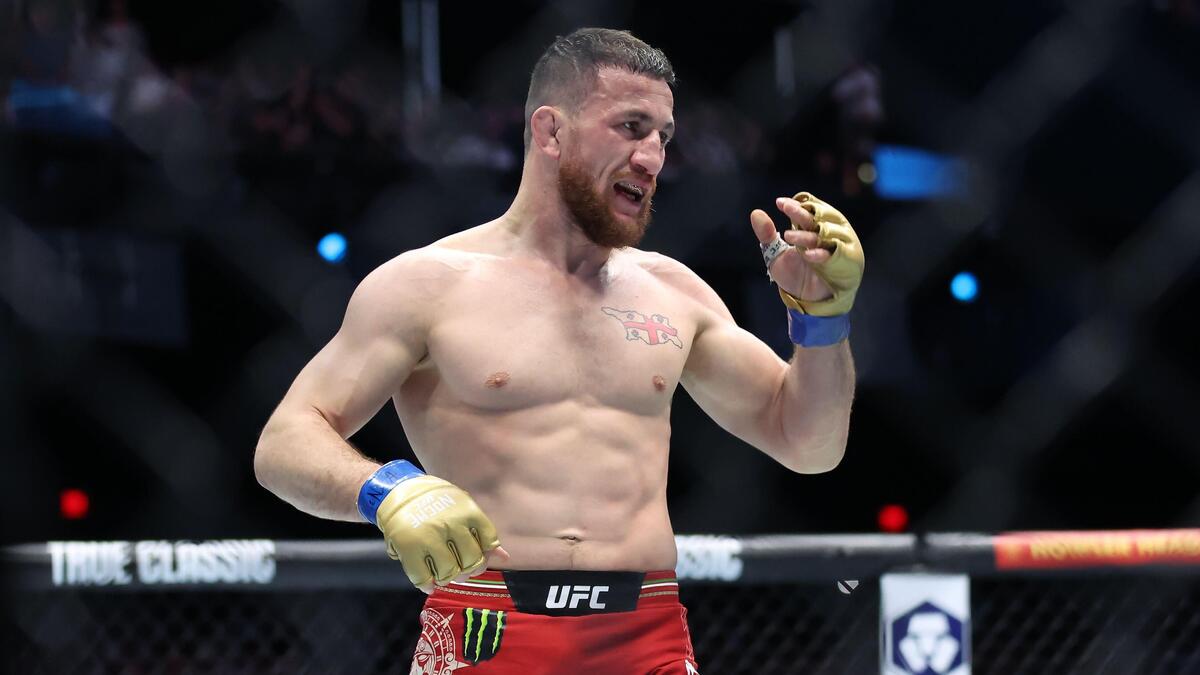
The UFC men's bantamweight division has seen rapid growth and intense competition since its inception. The division was officially established in 2010, following the UFC’s merger with the WEC. Dominick Cruz became the first UFC bantamweight champion, having already held the WEC bantamweight title. Cruz’s reign was marked by his innovative footwork, elusive style, and solid wrestling, defending his title successfully 3 times before suffering injuries that kept him out of the octagon for several years.
After Cruz’s extended absence, T.J. Dillashaw emerged as the new face of the bantamweight division, claiming the title in 2014 by defeating Renan Barão. Dillashaw would go on to become one of the most successful champions in the division’s history, defending the title twice. His impressive footwork, pressure, and fight IQ made him a dominant force at 135 pounds.
In 2016, Cody Garbrandt stunned Dillashaw with a victory for the title, but Garbrandt’s reign was short-lived as Dillashaw regained the title in 2017 in a rematch. Dillashaw's successful defenses and his rivalry with Garbrandt further solidified the bantamweight division's competitiveness.
Henry Cejudo made history in 2019, winning the bantamweight title by defeating Dillashaw in a stunning 32-second TKO at UFC Fight Night. Cejudo’s victory earned him the title of "Triple C", as he already held the flyweight title. Cejudo defended the bantamweight title once before vacating it and moving up to pursue a career in the Olympic wrestling circuit.
In 2021, Aljamain Sterling claimed the bantamweight title in a controversial win against Petr Yan, after Yan landed an illegal knee in the fourth round, resulting in a disqualification. Sterling later defended the title in a rematch, winning by split decision. His title reign marked a new chapter in the division’s history.
Meanwhile, Petr Yan and TJ Dillashaw continued to remain top contenders, vying for the bantamweight crown in a highly competitive field. The bantamweight division is known for its fast-paced, technical fights and continues to feature a mix of seasoned champions and rising talent.
| Name | Country | Height | Weight | Stance | Reach |
|---|---|---|---|---|---|
| Umar Nurmagomedov | Russia | 5’8” | 135lbs | Orthodox | 70.5” |
| Sean O'Malley | United States | 5’11” | 135lbs | Switch | 72” |
| Petr Yan | Russia | 5’7” | 135lbs | Switch | 67” |
| Cory Sandhagen | United States | 5’11” | 135lbs | Switch | 70” |
| Song Yadong | China | 5’8” | 135lbs | Orthodox | 67” |
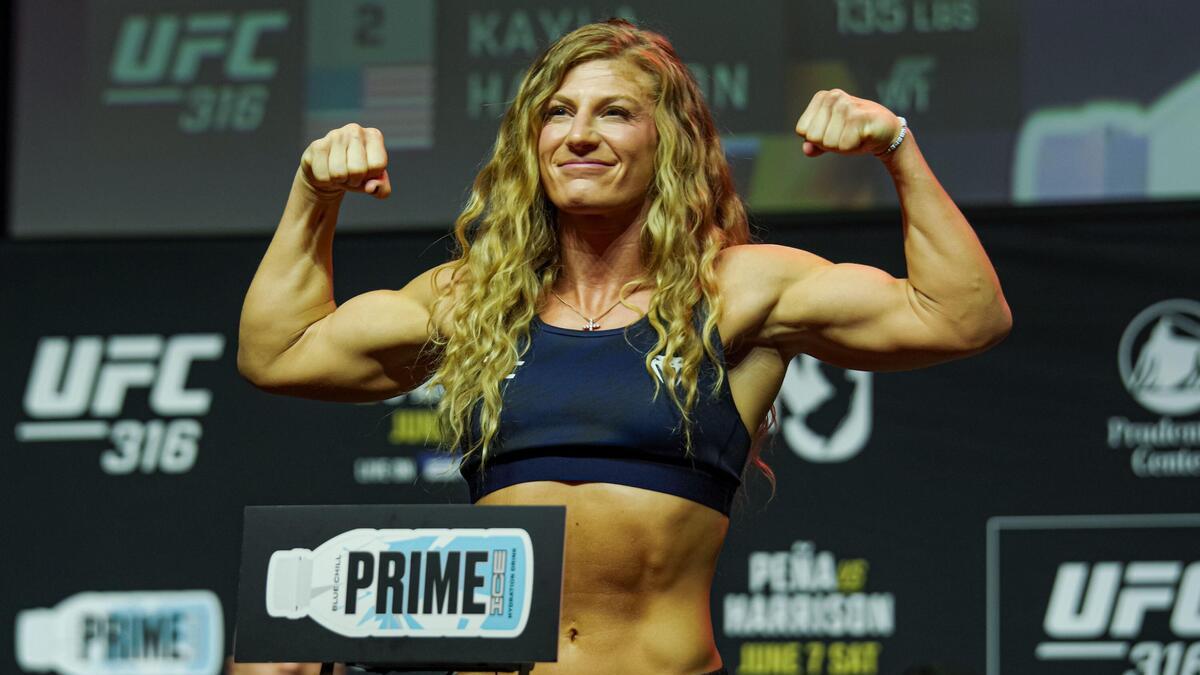
The UFC Women's Bantamweight division has been one of the most prominent weight classes in women’s MMA since its introduction. The division was established in 2012, with Ronda Rousey becoming the inaugural champion. Rousey was a dominant force in the division, known for her judo-based fighting style and ability to win fights via armbar submission. She successfully defended the title 6 times and became one of the biggest stars in MMA, helping elevate women’s MMA to new heights.
In 2015, Holly Holm shocked the world by defeating Rousey at UFC 193, winning the bantamweight title via a head-kick knockout in the second round. This victory ended Rousey's undefeated streak and marked a significant shift in the division. However, Holm's reign was short-lived, as she lost the title to Miesha Tate in 2016 at UFC 196 in a thrilling fight that ended with Tate securing a submission in the fifth round.
Tate’s reign as champion was also brief, as Amanda Nunes defeated her in 2016 to claim the bantamweight title. Nunes became a dominant champion, holding both the bantamweight and featherweight titles simultaneously. Nunes successfully defended her bantamweight belt 5 times, solidifying her legacy as one of the greatest female fighters of all time. Her reign included wins over top contenders like Valentina Shevchenko, Raquel Pennington, and Holly Holm.
In 2021, Juliana Peña pulled off one of the biggest upsets in UFC history by defeating Nunes at UFC 269 via submission in the second round, capturing the bantamweight title. Peña’s victory marked the beginning of a new era in the division.
The UFC Women's Bantamweight division remains one of the most competitive, with a mix of established champions and rising stars, showcasing high-level striking, grappling, and heart-pounding action.
| Name | Country | Height | Weight | Stance | Reach |
|---|---|---|---|---|---|
| Julianna Peña | United States | 5’6” | 135lbs | Orthodox | 69” |
| Raquel Pennington | United States | 5’7” | 135lbs | Orthodox | 67” |
| Norma Dumont | Brazil | 5’7” | 135lbs | Orthodox | 67” |
| Ketlen Vieira | Brazil | 5’8” | 145lbs | Orthodox | 68” |
| Yana Santos | Russia | 5’6” | 135lbs | Orthodox | 68” |
As we start to move to heavier categories, the style of fighting shifts slightly from being predominantly wrestling-based to being more mixed. Speed and agility are still very important, but with slightly higher weight more powerful styles can be effective too.
It’s less easy to predict the manner of victory. Fighters with diverse abilities can be extremely successful – for example, Ronda Rousey was equally effective with heavy punches as she was with her trademark armbar.
The women’s event has also historically been dominated by one fighter – first Rousey and now Nunes. Nevertheless, anyone who was able to look through the hype and identify that the power of Holly Holm would cause Rousey problems in their title fight would have made a lot of money on that bet.
Flyweight is the lowest weight class for men, and the second-lowest class for women. One step up from strawweight, the athletes in this class are still chiefly defined by their speed, agility, and technicality, but with a little more power thrown in.
The minimum weight is 115lb
The maximum weight is 125lb
The current men’s champion is Alexandre Pantoja
The current women’s champion is Valentina Shevchenko
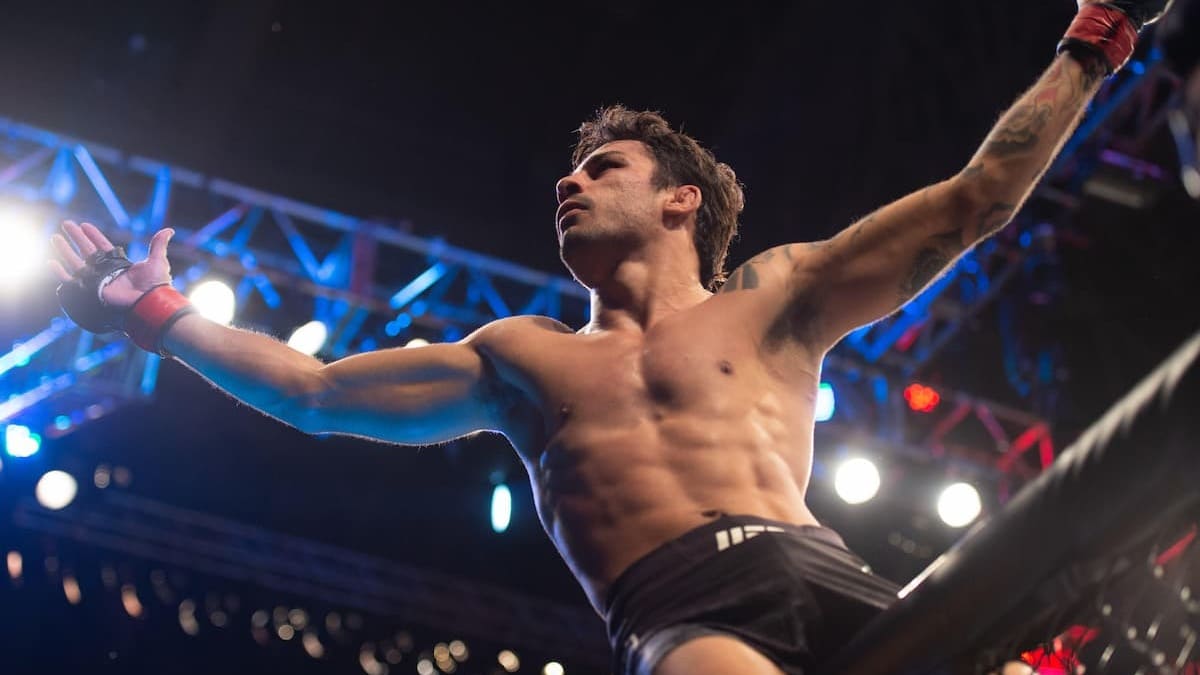
In the men’s event, the history of the flyweight division begins and ends with one name – Demetrious Johnson.
Johnson, or Mighty Mouse as he is commonly known, is one of the greatest fighters in UFC history and holds tons of records, including the most consecutive title defenses with 11.
The flyweight title was created in 2012, with the winner of a four-man tournament at UFC 152 in Toronto to be crowned the inaugural champion. Johnson, a wrestling and take-down specialist, saw each of his fights go the distance.
In the final against John Dodson, Johnson survived a couple of scares before winning via a unanimous decision. As the new flyweight champion, Johnson began the longest dominant reign in UFC history.
Over the next 6 years, Johnson successfully defended his title 11 more times against the greatest fighters in the division, including Olympic Gold Medalist Henry Cejudo and a re-match with Dodson.
Johnson is a highly technically skilled fighter, and the majority of his wins came from submission or unanimous decision if the fight went the distance. Over these six years, Johnson showcased his prowess in a vast array of diverse styles and introduced moves that had never been seen in the UFC before.
| Name | Country | Height | Weight | Stance | Reach |
|---|---|---|---|---|---|
| Joshua Van | Myanmar | 5’5” | 124lbs | Orthodox | 65” |
| Brandon Moreno | Mexico | 5’7” | 124lbs | Orthodox | 70” |
| Brandon Royval | United States | 5’9” | 124lbs | Southpaw | 68” |
| Amir Albazi | Iraq | 5’5” | 124lbs | Orthodox | 68” |
| Tatsuro Taira | Japan | 5’7” | 125lbs | Orthodox | 70” |
The women’s flyweight division is a recent addition to UFC, with the inaugural title match taking place in December 2017.
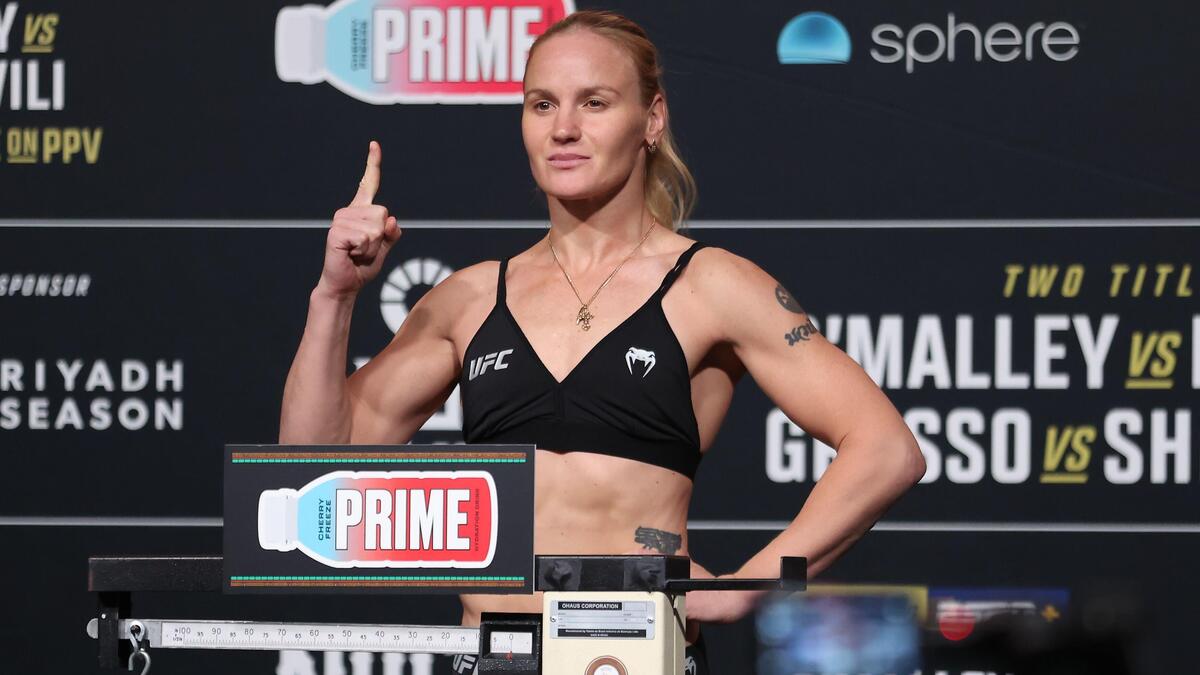
After holding the women’s flyweight title for more than four years and defending the strap seven times during that span, the world was shocked when Valentina Shevchenko tapped out to Alexa Grasso’s fourth-round rear-naked choke at UFC 285.
In doing so, Grasso became the first Mexican-born women’s UFC champion.
Grasso and Shevchenko fought to a split-draw in their September 2023 rematch, meaning that Grasso remains the champion.
The two recently wrapped up coaching the latest season of the Ultimate Fighter reality show and recently completed their trilogy, with Valentina Shevchenko dominating Grasso on the ground; retaining her flyweight championship via unanimous decision.
Shevchecko took on Manon Fiorot in the main event of UFC 315 and defeated her via unanimous decision.
| Name | Country | Height | Weight | Stance | Reach |
|---|---|---|---|---|---|
| Manon Fiorot | France | 5’7” | 124lbs | Orthodox | 65” |
| Natalia Silva | Brazil | 5’4” | 125lbs | Southpaw | 65” |
| Alexa Grasso | Mexico | 5’5” | 125lbs | Orthodox | 66” |
| Erin Blanchfield | United States | 5’4” | 124lbs | Orthodox | 68” |
| Maycee Barber | United States | 5’5” | 125lbs | Switch | 65” |
Similar to strawweight, flyweight fighters are mostly associated with speed and technical skill. The lowest weight categories are less likely to rely on sheer power and flyweight fights are often defined by off-the-charts cardiovascular fitness and strong wrestling skills.
While KOs and TKOs do occur in flyweight fights, submissions are typically the more common way for a fight to conclude. Fights often go the distance too, where competent technical displays are rewarded by the judges.
During his six-year reign, only two of Demetrious Johnson’s fights ended via TKO, and every one of them was at least 2 minutes long.
Avoid betting on blockbuster early finishes and instead focus on how each fighters’ wrestling skills match up.
Strawweight is one of three UFC weight classes that women compete in, and the only class that is exclusively for women. It is the lightest weight class in the UFC.
The maximum weight for strawweight fighters is 115lb (52.2kg)
There is no minimum weight requirement
The current strawweight champion is Mackenzie Dern
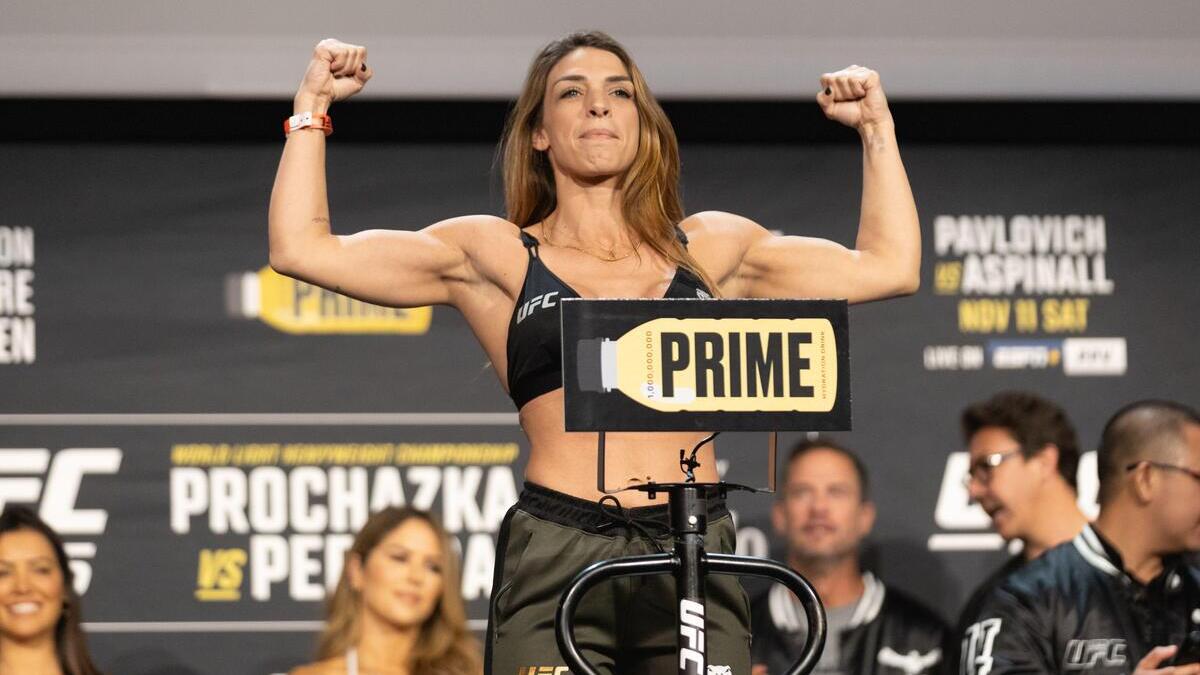
The inaugural strawweight champion was Carla Esparza when she won the first-ever title in 2013. The UFC added the weight class in season 20 of The Ultimate Fighter and signed Esparza along with 10 other fighters to compete in a tournament to determine the strawweight champion.
Esparza faced Rose Namajunas in the final. In a dominant performance, Esparza eventually made Namajunas tap out at 1:26 of the third round.
However, Esparza’s reign was short-lived. She lost her title a mere three months later to Joanna Jedrzejczyk, a Muay Thai kickboxing specialist from Poland.
Jedrzejczyk enjoyed a long spell as strawweight champion, successfully defending her title five times between 2015 and 2017. At UFC 217 at Madison Square Garden, Jedrzejczyk faced a title defense against Rose Namajunas.
In her first shot at the tile, since she was beaten by Esparza in the inaugural championship bout, Namajunas was considered a pretty big underdog against the undefeated champion. However, she gave a dominant display of striking which led to a first-round TKO with Jedrzejczyk floored by a left hand.
Namajunas successfully defended her title in the rematch at UFC 223, which went the distance. A unanimous judge’s decision saw her retain the title before she took over a year off due to a recurring spinal injury.
In UFC 237 in Rio de Janeiro, she finally lost her title to the hometown favourite, Jessica Andrade.
| Name | Country | Height | Weight | Stance | Reach |
|---|---|---|---|---|---|
| Tatiana Suarez | United States | 5’5” | 112lbs | Southpaw | 66” |
| Zhang Weili | China | 5’3” | 125lbs | Switch | 63” |
| Virna Jandiroba | Brazil | 5’3” | 115lbs | Orthodox | 64” |
| Yan Xiaonan | China | 5’5” | 115lbs | Orthodox | 63” |
| Amanda Lemos | Brazil | 5’4” | 115lbs | Southpaw | 64” |
As the lightest category, Strawweight fighters are not typically associated with great power. Rather they tend to be agile and technically skilled, not relying on sheer natural strength to beat their opponents.
There is no lower limit for strawweight fighters and, just like in all classes, fighters have been known to bulk up and fight at the category above. Recently, former strawweight champion Joanna Jedrzejczyk has shifted to 125lb flyweight.
Strawweight is one of the younger divisions in UFC, so there is still a lot of fluctuation in terms of both fighters and statistics.
The lack of huge power and focus on wrestling and technical skills means that fights often go the distance, and early KOs are not so common. For example, in the 15 fights before she won the strawweight title, none of Jessica Andrade’s fights were finished within 01:50.
These trends should be a consideration when betting on strawweight fights.
UFC weight classes have a lot of crossover with classes in both boxing and other MMA companies. Two notable exceptions from UFC are:
Cruiserweight
Super Heavyweight
There are a couple of reasons for this.
One is practical – although UFC is growing, it still has a comparatively small field of athletes. Spreading a thin field across two many weight classes would harm the integrity of the contest – resulting in many mismatches and uncompetitive fights.
In the case of cruiserweight (a class traditionally between light heavyweight and heavyweight) there simply has historically not been enough fighters around that weight to justify the class in UFC.
Furthermore, recent evidence suggests that the weight difference between light heavyweight and heavyweight is perfectly reasonable as it is – Daniel Cormier is a recent champion in both classes.
As for the lack of a super heavyweight category – one with no upper limit – the same is true, but even more so. Finding enough skilled fighters over, for example, 260lb to make a competitive field is tricky.
What would probably happen is huge men would be brought into UFC with little or no actual martial arts ability.
Safety is another concern. UFC has received criticism in the past for heavier fighters making drastic weight cuts to fight in lower classes, endangering the naturally lighter fighters. Without an upper limit, fighters on the border with heavyweight class could face physical disadvantages and serious danger against much heavier opponents.
In the early days of UFC, before it became a more reputable sporting institution, weight classes were yet to be introduced and rules in general were at a minimum.
In fact, UFC 1 in 1993 contained only two rules – no biting or eye-gouging (no fun!).
The very first match saw 400lb sumo wrestler Teila Tuli take on Gerard Gordeau, who came in it at just over half Tuli’s weight. Despite his considerable size advantage, Tuli’s lack of technical or self-defense skills saw him knocked out by a kick to the head within the first 30 seconds.
Crazy scenes like this were common in the early days. In UFC 7 Marco Ruas took down Paul “The Polar Bear” Varelans despite being around 90lb lighter and 7” shorter.
There was no regulation about what fighters could wear either. In fact, in a first-round match at UFC 1 Art Jimmerson took to the ring against Royce Gracie with one boxing glove on.
As a talented boxer, Jimmerson thought it would be an advantage to have one hand gloved up.
Unsurprisingly, not only did the single glove look ridiculous, it was a complete hindrance against Gracie’s polished Jiu-Jitsu and led to a first-round KO.
UFC has come a long way from its early chaotic and unpredictable days. Today, MMA is one of the fastest-growing sports in the world. Over the years, UFC has grown slicker, fairer, and more professional while retaining its brutal and exciting edge.
UFC’s weight classes are the heart of this professionalism. As you can see from our guide, the different classes throw up unique betting opportunities. Studying the habits of fighters within their classes, as well as the history of the class, is essential to being a winning UFC bettor.
/fit-in/400x235/1765290880/ufc-fight-night-royval-vs-kape-predictions-odds.jpg)
UFC Fight Night: Royval vs. Kape - Odds, Predictions & Picks
2 days ago | Zack Lane/fit-in/400x235/1764762067/ufc-323-dvalishvili-vs-yan-predictions-odds.jpg)
UFC 323: Dvalishvili vs. Yan 2 - Odds, Predictions & Picks
1 week ago | Missy Macdonald/fit-in/400x235/1763541237/ufc-fight-night-tsarukyan-vs-hooker-predictions-odds.jpg)
UFC Fight Night: Tsarukyan vs. Hooker - Odds, Predictions & Picks
3 weeks ago | Jasper Bushby-Edwards
We support responsible gambling. Gambling can be addictive, please play responsibly. If you need help, call 1-800-Gambler, players in Washington to contact 1-800-547-6133.
WSN.com is managed by Gentoo Media. Unless declared otherwise, all of the visible content on this site, such
as texts and images, including the brand name and logo, belongs to Innovation Labs Limited (a Gentoo Media
company) - Company Registration Number C44130, VAT ID: MT18874732, Quad Central, Q4 Level 14, Central Business District,
Triq L-Esportaturi, Birkirkara, CBD 1040, Malta.
Advertising Disclosure: WSN.com contains links to partner websites. When a visitor to our website clicks on
one of these links and makes a purchase at a partner site, World Sports Network is paid a commission.
Copyright © 2025